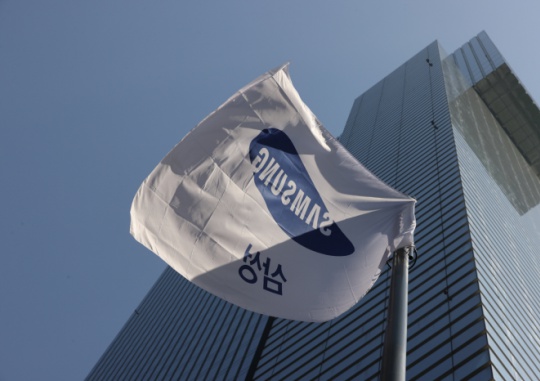Large Companies Also Show a K-shaped Recovery: Samsung Accounted for 40% of Operating Profits
이 글자크기로 변경됩니다.
(예시) 가장 빠른 뉴스가 있고 다양한 정보, 쌍방향 소통이 숨쉬는 다음뉴스를 만나보세요. 다음뉴스는 국내외 주요이슈와 실시간 속보, 문화생활 및 다양한 분야의 뉴스를 입체적으로 전달하고 있습니다.
[경향신문]

After the COVID-19 pandemic, a K-shaped recovery was apparent among major South Korean corporations. The nation’s reliance on a handful of businesses, such as semiconductors, increased, and 40% of the operating profits from the top fifty corporate groups were from Samsung. Samsung also accounted for over 70% of the increased compensation for executives (the top five among those earning 500 million won or more from each company).
Experts expressed concern that the higher dependence on a particular business has made the South Korean economy more volatile to the relevant business climate.
On April 12, the Kyunghyang Shinmun reviewed the business reports of 224 subsidiaries of the nation’s top fifty groups (with the exception of two unlisted groups) listed on the stock exchange based on the value of their assets last year. The results showed that the operating profits of Samsung group (43.9 trillion won) accounted for 42.0% of the total operating profits of the top fifty groups (102.4 trillion won). Samsung’s proportion increased by 8.0% compared with 2019 (34.0%), before the COVID-19 outbreak.
Samsung’s position was stronger even among the top four groups. Samsung accounted for 65.0% of the operating profits earned by the top four groups (66.1 trillion won), 8.0% higher than the previous year (57.0%). The results seem to reflect the fact that semiconductors flourished amid the COVID-19 pandemic, while businesses that other groups focused on suffered a blow. Hyundai Motor Group saw operating profits decrease 20.8% due to poor car sales hit by COVID-19, and SK Group’s profits dropped 48.2% due to the bad performance of the oil refinery industry.
Such performances were reflected in the executive salaries. Samsung paid the top five executives who earned an official salary (including wages, bonuses, and other income) of 500 million won or more approximately 37.6 billion won more than a year ago. Given that the compensation for the top five highest-paid executives in the top fifty groups increased by 51.2 billion won from last year, Samsung accounted for 73.4% of the total increase. Samsung also accounted for 19.7% of the annual salaries of the top fifty groups, an increase from the previous 15.3%.
Meanwhile, at large companies like Doosan group (-74.5%) and Hanjin group (-66.1%), whose major businesses performed poorly, the compensation for high-wage earners fell drastically. Among the top fifty groups, twenty groups cut compensation from the previous year. Many of these companies, unlike Samsung, reflected the performance in 2019, before COVID-19, when determining the salaries, and when last year’s poor performance is reflected in next year’s salary, the gap is expected to widen further.
Experts point out that the increasing dependency on a particular company or industry could raise the volatility of our economy. Lee Hang-koo, a researcher at the Korea Automotive Technology Institute said, “If the gap between industries widens, partner firms could face threats to their survival.”
Copyright © 경향신문. 무단전재 및 재배포 금지.
- 네이버, 소프트뱅크에 ‘라인’ 경영권 뺏길판…일본 정부서 지분 매각 압박
- “육군은 철수...우린(해병) 한다” “사단장님이 ‘하라’ 하셨다”···채 상병 사건 녹취록 공
- 폭발한 이천수, 협회에 돌직구 “황선홍 감독, 정몽규 회장, 정해성 위원장 다 사퇴!”
- 나경원, ‘윤 대통령 반대’ 헝가리식 저출생 해법 1호 법안으로···“정부 대책이 더 과격”
- 공수처, ‘이정섭 검사 비위 폭로’ 강미정 조국혁신당 대변인 조사
- “매월 10만원 저금하면 두 배로”…다음주부터 ‘청년통장’ 신청 모집
- 아동 간 성범죄는 ‘교육’ 부재 탓···사설 성교육업체에 몰리는 부모들
- [초선 당선인 인터뷰] 천하람 “한동훈은 긁어 본 복권…정치 리더로서 매력 없어져”
- 니카라과, “재정 악화” 이유로 한국 대사관 철수 통보
- 현대차, 차량 내부 20℃ 이상 낮춰주는 틴팅필름 개발…‘뙤약볕’ 파키스탄서 실증